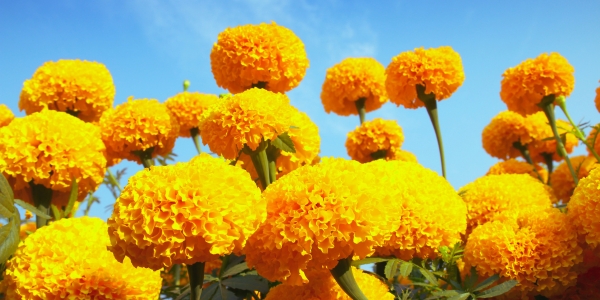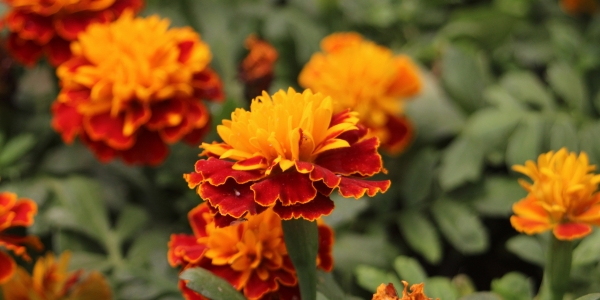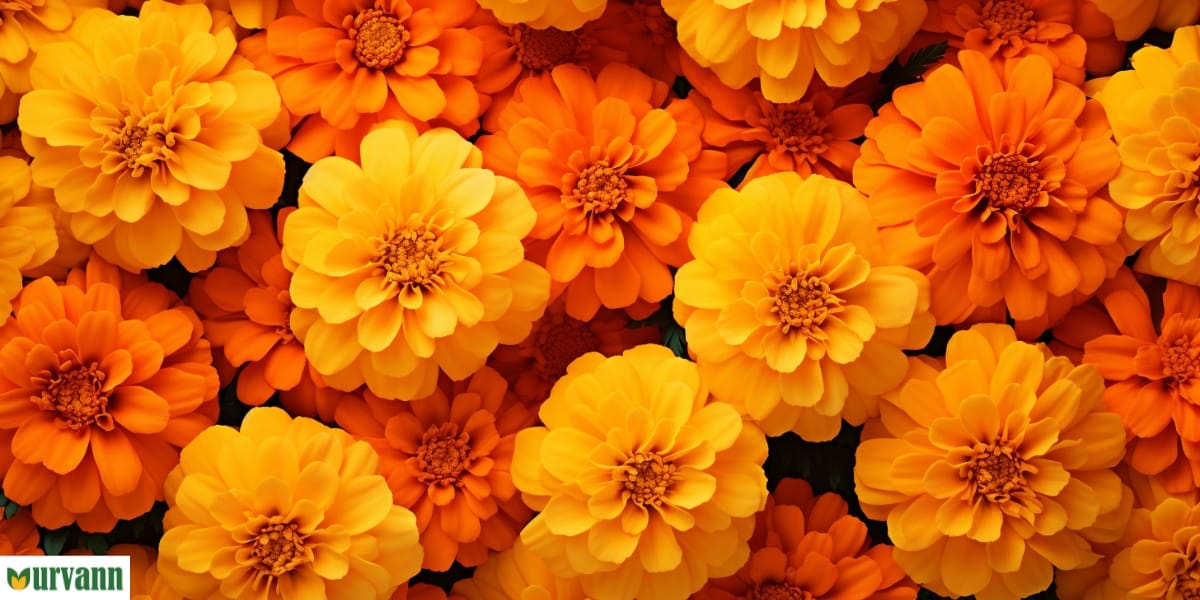Winters in North India bring a wave of sudden chill in the air when we all begin to wrap ourselves in layers and layers of warm clothes. The weather is gloomy, and the sunlight is lighter and sometimes scarce. However, in these winter months, I have discovered that nature provides us with something more to brighten our days and bring colour to our surroundings. These are the abundance of beautiful flowers that the winter season brings with it. They are large, small, vine-like, upright, and even those that spread fragrance in the garden.
Today, I would like to talk about my all-time favourite winter flowering plant, i.e., Marigolds. Let us dive more deeply into caring for this stunning plant.
.
Why Choose Marigolds for Your Winter Garden?
.
Hardy Nature
I have been planting marigolds for almost 3 years now and have observed that they are some of the toughest plants. They thrive happily in the winter season and do not need a lot of maintenance.
Vibrant Colors
Marigolds are available in many shades from the yellow, orange and red palettes. In the home garden they look like bright little orbs of joy and happiness. You can spot them from far away due to their stunning shades.
Pest-Repellent Properties
I have frequently planted marigolds as companion plants in my kitchen garden and plants prone to pest attacks. Did you know that the bitter-sweet scent of the flowers and the plants around them protect them from pest attacks and infestations?
Isn’t that just a bonus?
Cultural Significance
We all know the cultural significance of Marigolds. Apart from being stunningly aesthetic with benefits for the home garden, we use the flowers for all religious occasions. The first step in arranging any pooja ceremony in our home is to buy garlands of Marigold flowers to offer to our gods. Honestly, and I say this proudly, I have often picked fresh flowers from my garden to offer to our gods. The experience feels personal, and I feel more connected to the almighty.
.
Types of Marigolds to Grow in North India
Two popular varieties of Marigolds are frequently found in our country. They are also the best suited to our climate and do well here.
African Marigold

Larger of the two varieties, the flower heads of the African Marigold look like pom-poms or little orbs nodding their heads from between the dark green foliage. They consist of many tiny florets that form one big flower and look so beautiful in gardens that it almost seems unreal. They are perfect for borders, giving a magical appearance to your space.
Isn’t Mother Nature so beautiful?
.
French Marigold

French Marigolds are compact with lesser volume. The petals of this variety are more visible and pronounced. You can recognise them instantly, and they are commonly found in shades of orange and brown, usually in bicolours. Locally, this variety is known as the ‘Jafri Genda’ and is grown frequently in Indian households due to low maintenance and quick flowering time.
.
Step-by-Step Guide to Growing Marigolds
.
1. Choosing the Right Location
My gardening experience spanning over 5 years taught me that flowering plants need sunlight to bloom - the more, the merrier. Similarly, in the case of marigolds, the flower flowers have more vigour when placed in a location that gets 6-7 hours of sunlight each day. Also, make sure the area gets lots of air ventilation.
2. Preparing the Soil
Marigolds prefer slightly acidic soil to strengthen their flower-bearing capacity. Add grounded coffee beans to the soil to increase the acidic content, helping your flowering plant blossom and spread its cheer.
- Start by loosening the soil using a shovel or a gardening fork and gradually work to about 6 inches deep.
- Add compost and grounded coffee beans and mix the ingredients with your hands. Wear gardening gloves to protect your hands against any rough stones in the soil.
- Water the soil with a watering can to settle it.
3. Sowing the Seeds
Start sowing Marigold seeds during the first week of October to enjoy full bloom by late December, when the season will be perfect for the plants to flourish and grow healthily.
- Sow seeds about a quarter-inch deep and cover with soil, keeping the pot in the shade till little plantlets appear.
- Keep soil moist but not soggy, as Marigold does not like wet feet.
.
Caring for Your Marigold Plants
.
Watering
- Water Marigolds only when the soil looks almost dry. Do not wait till the soil is completely dry and crumbly. Remember, during winters, the soil does not dry up as quickly as in summers, so do not overwater plants.
- Avoid overhead watering to avoid leaf damage.
Fertilising
- Fertilise the plant every 30 days to maintain a consistent schedule so the plant’s root system can fall into the same cycle.
- NPK is a good fertiliser for flowering plants. Check the instructions on the packet before adding fertiliser, as different brands may have other instructions.
Pruning and Deadheading
-
Remove spent flowers to encourage more blooming. Trimming dead or damaged growth will help the plant focus on directing its energy to healthy portions.
- Trimming also helps to give your plant a bushy appearance
.
Common Issues and Troubleshooting
.
Yellowing Leaves
I often see yellowing leaves on my plants because I have overwatered them or there is less drainage. Ensure your pot ha proper drainage so roots are not choked and excess water flows out.
Fewer Flowers
Less acidic content in soil can lead to no flowering. If you see that in your plants, add grounded coffee beans, as suggested. Alternatively, you can also use a nitrogen-rich fertiliser to encourage flowering.
.
Conclusion
Growing Marigolds is a joy.
When I enter my garden with a fresh cup of tea and see my flowers shining in the sunlight, it fills my heart with so much gratitude that I can cry. They are gorgeous flowers and a must-have in your winter gardens. By following the steps outlined in this blog, I hope you will be able to enjoy these flowers as much as I have over the years.
If you do, will you send me a picture?
Happy Gardening!



Anjali
12/26/2024, 07:15 AMI love how simple and detailed this guide is! Thanks for the tips!